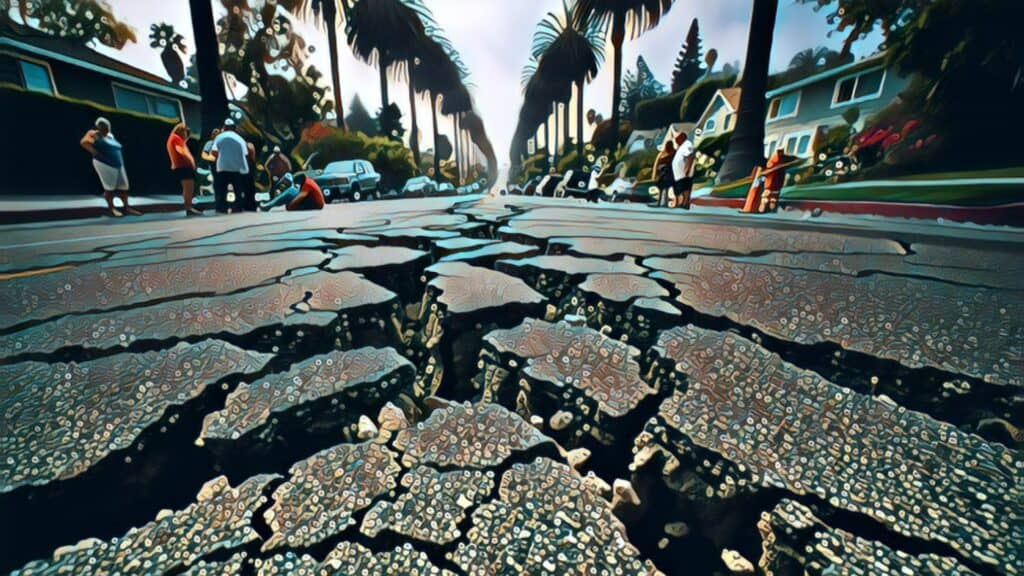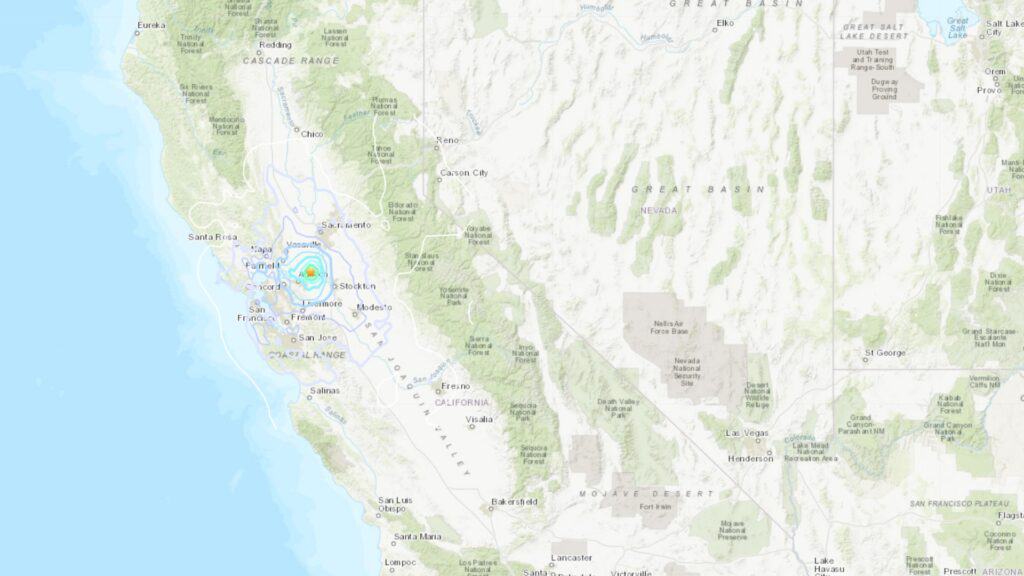LISTEN TO THIS ARTICLE
Takeaways:
- The Bay Area’s real estate market demonstrates resilience amidst seismic challenges, with strategic investments in resilient housing and community collaboration.
- Diversified investment strategies, coupled with technological integration, are key to navigating the Bay Area’s dynamic real estate landscape.
- Public-private partnerships are instrumental in addressing housing affordability and supply challenges, marking a collaborative approach towards a sustainable real estate market.

Seismic Stirrings: Unveiling the Interplay Between Earthquakes and Real Estate in the Bay Area
The Bay Area was recently rattled by a 4.1 magnitude earthquake on Wednesday, October 18, 2023, with its epicenter near Isleton, California, and has shaken further thoughts of real estate investing in this volatile part of the United States.
This seismic event not only startled many across the region but also brought to light the perennial concern of earthquake risks associated with real estate investments in this geologically active zone.
The Bay Area has a long history of seismic activity, with its underlying tectonic plates making it a hotspot for earthquakes.
This natural predisposition significantly impacts the real estate sector, especially from an investment standpoint.
The recent tremor serves as a timely reminder for real estate investors regarding the geological intricacies of the Bay Area and how it interlinks with real estate valuations and insurance costs12.
The Bay Area’s susceptibility to earthquakes is well-documented, with notable faults such as the San Andreas, Hayward, and Calaveras faults crisscrossing the region.
Scientists estimate a substantial 72% probability of a magnitude 6.7 or greater earthquake occurring soon, underscoring the seismic risk inherent in the region3.
This geological dynamism necessitates special considerations in real estate transactions, where both sellers and buyers need to be apprised of the seismic risks.
Local authorities require special geologic studies to prevent the construction of human-occupied structures in certain zones, and the surface rupture hazard must be disclosed in real estate transactions, ensuring that all parties are well-informed of the potential risks4.
A glimpse into the potential damage from a significant seismic event reveals a stark picture: a hypothetical scenario with a magnitude 6.7 quake or greater on the San Andreas Fault by 2043 could result in over 13,000 buildings destroyed, around 150,000 buildings with moderate damage, and over 55,000 displaced households.
These figures bring to light the tangible implications of seismic activity on real estate assets and the livelihoods of the Bay Area residents5.
As real estate investors navigate the lucrative yet seismically active terrain of the Bay Area, the recent 4.1 magnitude quake serves as a pragmatic cue to factor in geological risks when making investment decisions.
The intertwining of seismic activity and real estate dynamics in the Bay Area continues to be a salient point of discussion among investors, homeowners, and local authorities, fostering a culture of preparedness, disclosure, and resilient building practices to mitigate the adverse effects of future quakes.
Shaky Activity and Real Estate: A Historic Earthquake Overview
The Bay Area, encompassing the major city of San Francisco and its surrounding counties, has been a hub of seismic activity for centuries.
This region experienced a series of notable earthquakes, notably from 1838 to 1898, when it was rocked by a half-dozen major earthquakes1.
The seismic occurrences significantly shaped the region’s real estate dynamics, intertwining the physical landscape with the property market.
One of the most profound seismic events in the modern era was the 1989 Loma Prieta earthquake.
This major earthquake struck the San Francisco Bay Area on October 17, 1989, causing 63 deaths, nearly 3,800 injuries, and an estimated $6 billion in property damage.
It was the strongest earthquake to hit the area since the San Francisco earthquake of 19062.
The significant property damage underscored the inherent seismic risks tied to owning or investing in real estate in the Bay Area.
The aftermath of major seismic events has shown to have a ripple effect on the region’s real estate market.
For instance, studies have hypothesized that significant earthquakes like the one in 1989 hurt the stock prices of real estate firms headquartered in the San Francisco Bay Area3.
The direct correlation between seismic activity and real estate valuations showcases the broader economic implications of natural disasters in this region.
Over the past 30+ years, the Bay Area real estate market has seen cycles of booms and busts, with seismic activities playing a role in these market fluctuations4.
The 1868 Hayward Earthquake, with a magnitude of 7, further emphasizes the Bay Area’s seismic history and its impact on structures and real estate values over time5.
Housing Spotlight
The Bay Area, being one of the priciest real estate markets in the country, has always had to grapple with the juxtaposition of high property values and the inherent seismic risks.
As the region heads towards 2024, the memory of past seismic events, coupled with the recent 2023 earthquake, continues to influence real estate investment decisions.
The focus on seismic safety, retrofitting, and adherence to stringent building codes is becoming increasingly critical for real estate investors, homeowners, and developers.
The quest for affordable housing solutions amidst these challenges further compounds the complexities faced by the Bay Area real estate market.
The broader socio-economic factors such as the pandemic-induced remote work trend, the 2022 housing market fluctuations, and the state-level mandates for seismic safety are adding layers of considerations for real estate stakeholders.
As the Bay Area continues to evolve, the interplay between earthquake activity and real estate remains a pivotal aspect of the region’s economic and housing landscape, warranting a deeper exploration by investors, policymakers, and the community at large.

U.S. Department of the Interior
U.S. Geological Survey Earthquakes
Notable California Earthquakes 2000-2023
| Date | Epicenter Location | Region | Magnitude |
|---|---|---|---|
| Sept 3, 2000 | Yountville | North Bay | 5.0 Mw |
| Dec 22, 2003 | San Simeon | Central Coast | 6.6 Mw |
| Oct 30, 2007 | Alum Rock | Bay Area | 5.6 Mw |
| July 29, 2008 | Chino Hills | LA Area | 5.4 Mw |
| Jan 9, 2010 | Eureka | North Coast | 6.5 Mw |
| Apr 4, 2010 | Baja California | Baja California | 7.2 Mw |
| Mar 28, 2014 | La Habra | LA Area | 5.1 Mw |
| Aug 24, 2014 | South Napa | North Bay | 6.0 Mw |
| July 4, 2019 | Ridgecrest | Eastern | 6.4 Mw |
| July 5, 2019 | Ridgecrest | Eastern | 7.1 Mw |
| Dec 20, 2022 | Humboldt County | North Coast | 6.4 Mw |
| Oct 18, 2023 | Isleton | Bay Area | 4.2 Mw |
The Immediate Impact: Quake Aftermath Calculation
Home Prices and Sales
The Bay Area, renowned for its expensive real estate market, witnessed a cooling trend as of October 2023.
Home prices, although still trending downwards, remained very high with the median home price in the San Francisco-Oakland-Hayward Metropolitan Statistical Area (MSA) soaring over $1 million.
Despite this dip, the tight inventory has kept prices elevated, making affordability a continuous concern1.
A report from Realtor.com predicted a rise in home prices coupled with fewer sales across the nation for 2023, a trend reflected in the Bay Area as well2.
However, it’s noted that in May 2023, the Bay Area had the lowest supply level statewide with 1.5 months of unsold inventory3.
Rental Market Dynamics
The rental market too, mirrors the housing market’s high price trend.
Despite the pandemic-induced shift to remote work, which saw a slight dip in rental prices, the Bay Area continues to be one of the most expensive regions for renters.
The limited availability of affordable housing remains a significant challenge, which is exacerbated by the continual ground-shaking threats.
The recent earthquake might further strain the already tight rental market, as landlords and property managers reassess the seismic safety of their holdings.
Retrofitting and Property Values
With the recurrence of quake activities, homeowners in 500 California ZIP codes, including many in the Bay Area, now have the opportunity to apply for state grants for earthquake retrofits.
This development, aimed at bolstering the seismic safety of residential buildings, is a direct response to the region’s geological risks4.
The earthquake risks are prompting a closer look at liquefaction zones, especially in downtown San Francisco and Oakland’s downtown area.
Properties in these zones might see a dip in value due to the added cost of retrofitting and the perceived higher risk.
Wildfires and Other Factors
The Bay Area’s real estate market is also under the specter of wildfires, a recurrent menace in California.
The interplay of seismic risks, wildfires, and high property values continues to shape the real estate landscape in the Bay Area cities.
Additionally, other broader factors such as mortgage rates, property tax, and state-level mandates are intertwining with the seismic activities to influence the real estate market dynamics.
Redevelopment and Future Preparedness
The ongoing redevelopment projects aimed at reconstructing old buildings and infrastructure to meet the current safety standards are a testament to the Bay Area’s proactive approach to mitigating earthquake risks.
The transfer of old properties and their conversion into seismically safe structures is an ongoing trend.
The real estate market is slowly adapting to the realities of the region’s profile, with more emphasis on creating earthquake-resistant structures, which in the long run, is anticipated to have a positive impact on property values.
The immediate impact of the recent earthquake serves as a reminder of the Bay Area’s precarious geological setting.
While the real estate market continues to thrive, the underlying risks are prompting a reshaping of the market dynamics.
Both homeowners and real estate investors are now more than ever, aligning their strategies to accommodate the seismic realities, aiming for a resilient and sustainable real estate market in the Bay Area.
Real Estate Market Resilience
Testament of Endurance
The San Francisco Bay Area, known for its scenic vistas and booming tech industry, has always been a coveted place for real estate investments.
Despite facing numerous challenges over the years, from seismic activities to economic downturns, the real estate market here has shown remarkable resilience.
Historical Resilience
Historically, the Bay Area’s real estate market has endured and bounced back from various adversities, be it the 1906 San Francisco earthquake or the more recent economic challenges posed by the pandemic.
The region’s real estate market has often been seen as a timeless gem, with its enduring appeal and resilience highlighted amid fluctuating economic conditions1.
Pandemic and Economic Shifts
The recent pandemic-induced economic downturn tested markets across the U.S., yet the Bay Area’s real estate market remained resilient.
With a slight slowdown in sales due to uncertainty, the housing market held steady, reflecting the region’s robust economic fundamentals and the enduring appeal of its real estate2.
Challenges Overcome
Seismic activities pose significant challenges to the Bay Area, a region no stranger to earthquakes.
The real estate market here has continually rebounded, showcasing the community’s ability to withstand and recover from profound shocks like earthquakes.
Resilience planning is critical in this region, allowing for the preservation of the unique cultural and economic character of the Bay Area communities34.
Housing Market Dynamics
Even with stratospheric home prices, which seemed impervious for much of the pandemic period, the Bay Area housing market has shown signs of resilience even as people migrated away from its large population centers5.
In times of economic uncertainty, the Bay Area has maintained one of the most dynamic labor markets in the country, which in turn supports a resilient real estate market6.
Preparing for the Future
With long-range plans like Plan Bay Area 2050, the region aims to chart a course for a future that is more equitable for all residents and more resilient in the face of challenges.
The plan focuses on key elements like housing and transportation, identifying paths to ensure the Bay Area remains an attractive and resilient place for real estate investments4.
The SF Bay Area, with its unique blend of economic vitality, scenic beauty, and a proactive approach to resilience planning, continues to hold a strong appeal for real estate investors and homeowners alike.
The region’s real estate market resilience is not just a testament to its past endurance but a promising indicator of its ability to withstand and thrive amidst future challenges.
Top 5 Earthquake-Resilient Building Methods
- Base Isolation: This method involves separating the building from the ground using a set of bearings, pads, or base isolators, which absorb the energy from an earthquake, reducing the amount transferred to the structure.
- Shear Walls: These are vertical barriers constructed within the building that help distribute earthquake forces, thus minimizing damage.
- Cross-Bracing: Cross-braces are diagonal braces placed across a building’s structural frame to provide additional support and distribute seismic forces.
- Reinforced Concrete: Reinforcing concrete structures with steel bars or mesh enhances their ability to withstand bending and torsion during seismic events.
- Energy Dissipation Devices: Devices such as dampers dissipate the energy generated during an earthquake, reducing the forces exerted on the building and minimizing damage.

Preparing for the Future
As the Bay Area continues to evolve, strategic preparations are underway to ensure a resilient and flourishing real estate market.
With an emphasis on seismic safety, housing development, and community collaboration, the region is poised for a sustainable future.
Safety Initiatives
The Bay Area, particularly Oakland, has put forth efforts to improve safety in residential areas.
The City of Oakland initiated a program allowing new homeowners of older homes to retrofit for safety at a flat permit fee, given the retrofit plan meets the current strengthening standards.
Additionally, partial rebates on the city transfer tax are available to homeowners to cover seismic retrofitting costs within 60 days of closing escrow on their new homes12.
Regular assessments of building structures, especially older buildings, are encouraged to ensure they meet the current safety standards3.
Housing Development Megaprojects
Several large-scale housing development projects are in the works to address the housing crisis in the Bay Area, providing a blend of affordable and market-rate housing.
These megaprojects signify a substantial investment in the region’s real estate future. Some notable projects include:
- Alameda Point: A $1 billion project on a 68-acre waterfront property, aiming to provide 800 homes, retail, and commercial space with an estimated completion in 20234.
- Balboa Reservoir: A $600 million project targeting to provide 1,100 housing units, with half being affordable, alongside community amenities with an estimated completion in 20264.
- Brooklyn Basin: Transforming 64 acres of industrial waterfront into a neighborhood with up to 3,700 homes, shopping areas, parks, trails, and marinas4.
Community Collaboration and Future Planning
Addressing the housing crisis requires a concerted effort from local governments, affordable housing developers, and community financial institutions.
The Future of Housing initiative in the Bay Area emphasizes the need for local collaborations to tackle the housing crisis effectively5.
Plan Bay Area, a regional long-range plan, identifies necessary policies and investments to ensure a more affordable and vibrant Bay Area, charting a path forward for future investments and public policies6.
Financial Investments for Affordable Housing
The Bay Area Housing Finance Authority (BAHFA) proposed a regional bond measure to invest in the production and preservation of affordable housing, indicating solid financial backing to support the housing sector7.
Through seismic safety initiatives, substantial housing development projects, community collaboration, and financial investments, the Bay Area is diligently preparing for a resilient real estate market that caters to a diverse community, ensuring a promising and sustainable future.
Conclusion: Bay Area Investment Strategies and Priorities
The Bay Area, with its diverse economy and flourishing tech sector, continues to be a prime location for real estate investments.
Various trends and strategies are emerging as the region navigates through a dynamic real estate landscape shaped by economic forces, earthquake activity, and other localized factors.
Strategic Market Analysis
Investors and stakeholders are closely monitoring market dynamics to identify profitable opportunities.
Recent data shows a mix of trends across different counties within the Bay Area, indicating a potential upward trajectory in some areas, while others experience a decline in median sold prices1.
Detailed market analysis, focusing on localized data and broader metro area trends, is crucial for making informed investment decisions.
Investment in Resilient Housing
As seen in the development of mega projects, a significant emphasis is on creating resilient housing to withstand seismic challenges, making investments in such projects a priority.
The redevelopment and retrofitting of existing structures also contribute to the region’s real estate resilience against natural calamities.
Diversified Investment Strategies
The Bay Area’s booming economy attracts a variety of investment strategies.
From long-term equity growth strategies to short-term rental income strategies, the region offers a broad spectrum of investment avenues2.
Real estate associations, like the Bay Area Real Estate Investors Association, emphasize educating individuals on local housing market investments, showcasing the variety of strategies available3.
Technological Integration
Leveraging technology for market analysis, property management, and transaction facilitation is another priority.
Platforms like Zillow provide essential market data, while social networks like LinkedIn are utilized for networking and information dissemination among real estate professionals.
Public-Private Partnerships
Collaborative efforts between public and private entities are also on the rise to address housing affordability and supply challenges.
Future Focus Areas
- Market Diversification: Expanding investment portfolios to include a mix of properties across various Bay Area cities and towns.
- Sustainable Development: Encouraging sustainable building practices to meet state-level mandates and cater to the evolving preferences of buyers and tenants.
- Affordable Housing Initiatives: Supporting projects that address the affordable housing shortage, especially in expensive real estate markets like San Francisco and Marin County.
- Community Engagement: Engaging with local communities to curate development projects that meet the unique needs and preferences of different demographics.
The Bay Area real estate market demonstrates resilience and potential for growth despite various challenges.
By keeping a close eye on market trends, aligning with regional priorities, and adopting diversified investment strategies, investors can navigate through the complexities of the market and work towards profitable and sustainable outcomes.
Additional Resources
Earthquake Preparedness Resources
Local Earthquake Retrofitting Professionals
Real Estate Advisors Specializing in Seismic Safety
References
- Norada Real Estate: Bay Area Housing Market1
- Medium: Bay Area Real Estate: 10 Profit-Boosting Investment Strategies2
- Bay Area Real Estate Investors Association3
- Ready.gov: Earthquake Preparedness
- Earthquake Country Alliance: Seven Steps to Earthquake Safety
- Bay Area Retrofit
- Safer Home
- California Earthquake Authority: Find an Agent
- Seismic Safety Inc.
No related posts.




























